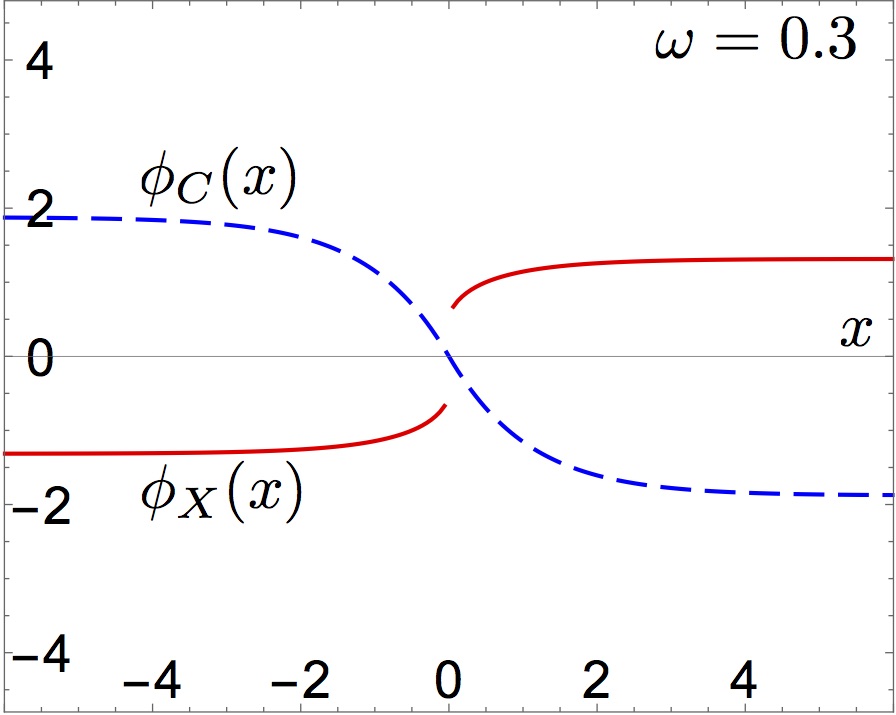Condensates of quasiparticles
The study of Bose-Einstein condensates was more recently extended to non-atomic systems. For example, exciton-polariton condensates can be produced in semiconductors. Exciton-polaritons are matter-light quasiparticles that arise from the coupling between excitons and photon modes in a semiconductor microcavity and can form Bose-Einstein condensates (BEC) at relatively high temperatures.
Continuous and discontinuous solitons

The system is described (in a mean-field approximation) by a system of two Schrödinger-type equations including a nonlinear term. We are interested in physical phenomena and mathematical results lying outside the parameter regime of validity of a single Gross-Pitaevskii model.
Polariton condensates emerge as a fertile ground for solitonic structures. Our work provides an understanding of these structures. We have analytically identified soliton solutions for the lossless system. One type of black soliton studied is of the standard type where the fields vanish at the soliton center. Beyond that, we identify a discontinuous soliton where the exciton field exhibits a jump at the soliton center, and therefore the exciton density does not vanish at any point. [PRB, 2015], [Physica D, 2016].
Presentation
- Continuous and discontinuous solitons in polariton condensates, POLATOM 22/6/2015, Bad Honnef, Germany.